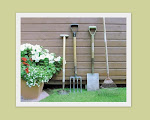
- A 50x50 foot lawn can produce enough oxygen for a family of four.
- Lawns cool the atmosphere.
- Coverts carbon dioxide to oxygen. which is a process to clear the air.
- Dense healthy grass slows water runoff, removing contaminates and trapping soil, which allows fresh filtered water to the underground water supply.
- Lawns cover 25 million acres in the United States.
- About 100 million people operating 61 million lawn mowers.
- Estimated that North America about 1 billion hour are spent on lawn care every year.
I hope you see why we now have National Lawn care month. We spend a lot of time and money. Taking care of our lawn. It does not have to cost a lot if we are paying attention to the details.
Lawn Mowing. Higher mowing reduces weed problems and moisture requirements. Many seed such as crabgrass, need light to germinate,and taller turf discourages these seeds from germinating. Taller turf also has a better root-to-shoot ratio, so it is not under the same stress as closely mowed turf.
- One of the biggest mistakes of growing a lawn is to mow it too short. Bluegrass lawns should be mowed at 2 1/2 to 3 inches.
Core Aeration. I have talked about this in a past post. Again soil compaction is a major problem. Normal soil contains 25% air. Aerating your soil helps allow that air and moisture into the soil. Aeration can be done anytime when soils are moist. This also helps decompose thatch which is dead grass roots and rhizomes that accumulate between the base of the grass plant and the soil. Short mowing, excessive water and excessive fertilizer all increases thatch buildup.
Herbicides. You should always practice proper cultural actions and then if weeds continue look towards herbicides to help eliminate your weed problems.
- Pre-emergents stop the weed seed from germinating These should be applied around April 15 to control crabgrass and, spurge and other annual weed seed.
- Broadleaved -leaf killer help control dandelions and other weeds with a broad leaf that are already growing. Apply this as soon as the weeds start to grow actively.
Fertilization. Is one of the most important practices to keep a good, healthy, weed-free lawn.
- Apply a high nitrogen fertilizers three to four times per year to keep the lawn supplied with nutrients .
- Don't just apply when you think about it.
- Apply small amounts of fertilizer a couple of times a year.
- Use a slow-release fertilizer.
Save your time and money, and have a more attractive lawn, by working smarter not harder on your lawn this season. I go into more depth on some of these subjects in past lawn care post. Utah State Extension Services also has a easy to follow plan for lawn care. That should help those who are new to this stick to a schedule. Enjoy National Lawn Care month and, I hope you have a barefoot lawn this season!




Who takes care of your lawn?
ReplyDelete